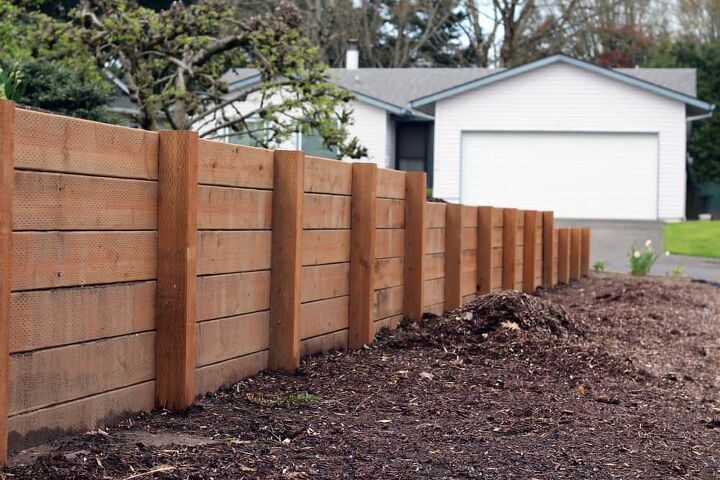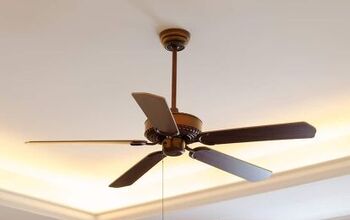Who Is Responsible For The Retaining Wall On A Property Line?

Most of the time, people think they can do what they want on their property. Sometimes that is not always the situation when it comes to the property lines. Retaining walls on property lines are one of those touchy subjects where it takes both party’s agreement.
The property line is the imaginary line that separates two neighboring properties. Anything built on the line calls for an agreement that is best left to legal paperwork for both parties’ security. So, who is responsible for a retaining wall on the property line?
Both parties are responsible for a retaining wall that falls on a property line. Also, each party will be responsible for any maintenance, repair, and upkeep on their side of the retaining wall. If a retaining wall falls on one side of the line, then that person is responsible for the wall.
Do You Need Retaining Wall Installers?
Get free, zero-commitment quotes from pro contractors near you.

What is a Retaining Wall?
A retaining wall supports the land and is designed from bricks, timber, masonry, concrete bags, or suitable material. Whether the climate is wet or dry, the walls must support the earth. It has to be built tough and allow drainage without giving way.
Anyone can build a retaining wall, but a licensed engineer must be hired if it is over a certain height. To describe it best, it keeps the land from eroding for gardens or any other excavations. If it is not built correctly, it can cause significant damage to either side of the property line.
What is the Legal Standpoint?
First off, when building a retaining wall, city ordinances and codes must apply. Both parties should always check with your local government on the rules and regulations. Some cities will not allow the property owner to build a retaining wall without a licensed contractor.
Checking the legalities can save time, money, and trouble from lawyers, courts, and fines. There have been some battles in court as to who must pay to construct the retaining wall. An agreement must be made before building the wall because it affects both parties and their properties.
Both property owners have legal rights when a retaining wall is built on or near the property line. It is essential to know those rights and contact an attorney for free legal advice. It is the law if one neighbor wants to build a wall to support their land, the neighbor must oblige.
Both Parties Are Responsible for the Retaining Wall
After all the agreements and legalities are put in place, both parties are responsible for the wall’s care. Each property owner must keep up with the maintenance on their side of the line. The only way the wall owner is responsible is if the wall is on their side of the property line.
If the retaining wall follows the property line, there are certain situations where full responsibility falls on the owner. These are the loopholes to the rules that cause most of the battles of the neighbors.
1. If the Neighbor’s Property is Damaged
If the land on the neighbor’s side subsides or has damage, the wall owner is reliable. If the wall is poorly built with low-quality material, it may lean into the neighbor’s yard. Sometimes the wall may fall entirely and damage the property or belongings of the neighbor.
In most cases, the homeowner’s insurance can cover the damages. Sometimes simple communication can resolve this issue before it happens. The owner can repair the leaning wall before it is too late.
The most common damage is the land subsiding. This problem usually deals with poor drainage. Water can erode property, and if it sits in one spot, it can damage the wall. The wall owner should fix these issues on the neighbor’s property according to the law.
2. If No Agreement Was Made At the Time of Building the Wall
Unfortunately, some neighbors do not get along and refuse to speak to one another. There are situations where the wall owner built the retaining wall without the neighbor’s permission on the property line. They wanted the neighbor to pay for half or part of the retaining wall, and both landed up in court.
These are sad situations because all it takes is communication with written agreements to protect individual rights. The courts will see it as the wall owner built the wall without permission and therefore responsible for the cost. Sometimes the judge will order the wall to be removed at the wall owner’s expense.
This scenario is not only un-neighborly but also illegal. Most times, the neighbor never wanted anything to do with the wall when the owner puts it up anyway. Removing the wall or pushing it back are the only options.
3. Both Parties Are Responsible for Damages to the Wall
From a legal standpoint, the retaining wall runs on both properties. Therefore, any damages to the wall should be split among the neighbors. This is why agreement and communication are so critical.
It depends on the material used, but sometimes rotting may occur or some other form of deterioration. The property owners should split the cost for professional help. To be even more neighborly and save money, they can work together and fix it themselves if possible.
Good neighbors will share the maintenance on both sides of the wall. Keeping the grass cut and the leaves pulled away can keep the retaining wall up for a long time. As the old saying goes, “Good fences make good neighbors.”
4. When Negligence Causes Injuries, Both Parties are Responsible
The same rules apply when someone gets hurt on someone else’s property. Since the retaining wall is on the property line, both neighbors are responsible. If the wall causes personal injury to someone just walking by, the property owners’ insurances get together and resolve the issue.
Negligence would fall under the category of lack of maintenance. The wall could fall on someone and injure them if the wall is deemed unsafe. In this example, both property owners know about the hazardous situation without resolving it.
If this situation goes to court, the judge will put both property owners liable for injuries sustained. The medical bills and other expenses to the injured party fall under the property owners’ responsibility.
5. At the End Who Is Really At Fault?
We live in a world everything has to be documented. Conversations, receipts, dates, times, and everything needs to be written down. As much as we love our neighbors, disputes always tend to happen when dealing with the property lines.
Everyone has a right to enjoy their property. There are fences, treelines, shrubs, and even these retaining walls that can cause issues. The most considerable dispute in courts is who is responsible or who is at fault?
By following the laws, codes, city ordinances, and communication among the property owners, we would not need courtrooms. The bottom line is there was not enough research before the building of the retaining wall. Technically, for those reasons, the wall owner is at fault.
There are some things the neighbor needs to research that deals with his or her rights. Once both parties do their research, then they can come up with an educated decision and agreement.
Examples of Retaining Wall Systems and Advantages
These are some ideas people use for retaining walls. The main reasons people choose to build them are because of landscape purposes and privacy.
- Terraces
- Planters
- Raised patios
- Raised garden beds
- Tree surrounds
- Steps
When it comes to the look of the landscape, it can make a property beautiful. It also adds value to the land. If it is built correctly, it can also save the land on both sides of the property lines.
The Disadvantages of Retaining Walls
The disadvantages mainly deal with disputes among neighbors when it comes to the property lines. If the drainage is poor, the land can subside and cause holes in the ground. Once this happens, the wall usually becomes a money issue between the neighbors who will repair the damages.
Sometimes when people sell their homes, the people who buy the home and property may not want the retaining wall. In these situations, it can be a problem for the wall owner or the neighboring properties.
Do You Need Retaining Wall Installers?
Get free, zero-commitment quotes from pro contractors near you.

Related Questions
What is the cheapest way to build a retaining wall?
Treated pine is the most affordable material to use. The cost for materials and labor is $25 per square foot.
What makes the best retaining wall?
The soil determines the best option for materials. A professional contractor can tell which one is the best option. There is no specific answer until the ground situation is determined due to different locations.
What is the closest I can build a retaining wall to a boundary?
The safest call is 4.5 to five feet away from a boundary. You should always contact your local city officials before building the wall to be sure. The last thing you want is to have to move it.
Related Guides

We are a team of passionate homeowners, home improvement pros, and DIY enthusiasts who enjoy sharing home improvement, housekeeping, decorating, and more with other homeowners! Whether you're looking for a step-by-step guide on fixing an appliance or the cost of installing a fence, we've here to help.
More by Upgraded Home Team











![10 Best Electric Pressure Washers – [2022 Reviews & Guide]](https://cdn-fastly.upgradedhome.com/media/2023/07/31/9070600/10-best-electric-pressure-washers-2022-reviews-guide.jpg?size=350x220)















